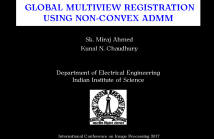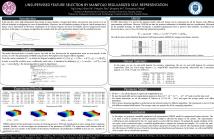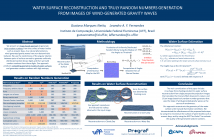- Transducers
- Spatial and Multichannel Audio
- Source Separation and Signal Enhancement
- Room Acoustics and Acoustic System Modeling
- Network Audio
- Audio for Multimedia
- Audio Processing Systems
- Audio Coding
- Audio Analysis and Synthesis
- Active Noise Control
- Auditory Modeling and Hearing Aids
- Bioacoustics and Medical Acoustics
- Music Signal Processing
- Loudspeaker and Microphone Array Signal Processing
- Echo Cancellation
- Content-Based Audio Processing
- Read more about MODELING STRUCTURAL DISSIMILARITY BASED ON SHAPE EMBODIMENT FOR CELL SEGMENTATION
- Log in to post comments
Accurate cell segmentation is one of the critical, yet challenging problems in microscopy images due to ambiguous boundaries as well as a wide variation of shapes and sizes of cells. Even though a number of existing methods have achieved decent results for cell segmentation, boundary vagueness between adjoining cells tended to cause generation of perceptually inaccurate segmentation of stained nuclei. We propose
- Categories:
 29 Views
29 Views- Read more about MOTION-CONSISTENT VIDEO INPAINTING
- Log in to post comments
This demonstration aims to show some resulting videos for our method presented in ICIP. It is a fast and automatic inpainting technique for high-definition videos which works under many challenging conditions such as a moving camera, a dynamic background or a long-lasting occlusion. By incorporating optical flow in a global patch-based algorithm, our method provide improvements compared to the state-of-the-art, especially in motion preservation.
- Categories:
 27 Views
27 Views- Read more about TASK-DEPENDENT SALIENCY ESTIMATION FROM TRAJECTORIES OF AGENTS IN VIDEO SEQUENCES
- Log in to post comments
This paper proposes a method for detecting zones of visual attention based on the motion of agents in a video analytics
ICIP2017.pdf
- Categories:
 14 Views
14 Views
We consider the problem of aligning multiview scans obtained using
a range scanner. The computational pipeline for this problem can be
divided into two phases: (i) finding point-to-point correspondences
between overlapping scans, and (ii) registration of the scans based
on the found correspondences. The focus of this work is on global
registration in which the scans (modeled as point clouds) are required
to be jointly registered in a common reference frame. We consider
an optimization framework for global registration that is based on
slides.pdf
- Categories:
 20 Views
20 Views
- Read more about UNSUPERVISED FEATURE SELECTION BY MANIFOLD REGULARIZED SELF-REPRESENTATION
- Log in to post comments
Unsupervised feature selection has been proven to be an efficient technique in mitigating the curse of dimensionality. It helps to understand and analyze the prevalent high-dimensional unlabeled data. Recently, based on the self-similarity property of objects, self-representation which assumes that a feature can be represented by the linear combination of its relevant features has been successfully used in unsupervised feature selection. In this paper, we propose a novel algorithm termed Manifold Regularized Selfrepresentation(MRSR) based on the self-representation ability of features.
- Categories:
 35 Views
35 Views- Read more about V. Bruns, M.A. Martinez-del-Amor, H. Sparenberg - GPU-friendly EBCOT variant with single-pass scan order and raw bit plane coding (POSTER)
- Log in to post comments
A major drawback of JPEG 2000 is the computational complexity of its entropy coder named Embedded Block Coder with Optimized Truncation (EBCOT). This paper proposes two alterations to the original algorithm that seek to improve the trade-off between compression efficiency and throughput. Firstly, magnitude bits within a bit plane are not prioritized by their significance anymore, but instead coded in a single pass instead of three, reducing the amount of expensive memory accesses at the cost of fewer truncation points.
- Categories:
 96 Views
96 Views
- Read more about Water Surface Reconstruction and Truly Random Numbers Generation From Images of Wind-Generated Gravity Waves
- Log in to post comments
We present an image-based approach to generate truly random numbers from the surface of water bodies such as oceanic bays. As a natural phenomenon, wind-generated gravity waves have non-deterministic behavior. We use the randomness of the angular relation between pairs of estimated surface normals to generate uniformly distributed random binary digits and build random numbers from those digits. Our approach produces compelling geometric models of water surfaces and generates random numbers with high entropy.
- Categories:
 17 Views
17 ViewsIn this paper we focus on the usefulness of verbal events for speech based emotion recognition. In particular, the use of phoneme sequences to encode verbal cues related to the expression of emotions is proposed and lexical features based on these phoneme sequences are introduced for use in automatic emotion recognition systems where manual transcripts are not available. Secondly, a novel estimate of emotional salience of verbal cues, applicable to both phoneme sequences and words, is presented.
- Categories:
 7 Views
7 Views- Read more about Hand Gesture Recognition Using Ultrasonic Waves
- Log in to post comments
- Categories:
 11 Views
11 Views
- Read more about SIGNAL PROCESSING CUP 2017 - REAL-TIME BEAT TRACKING CHALLENGE - Results
- Log in to post comments
- Categories:
 64 Views
64 Views